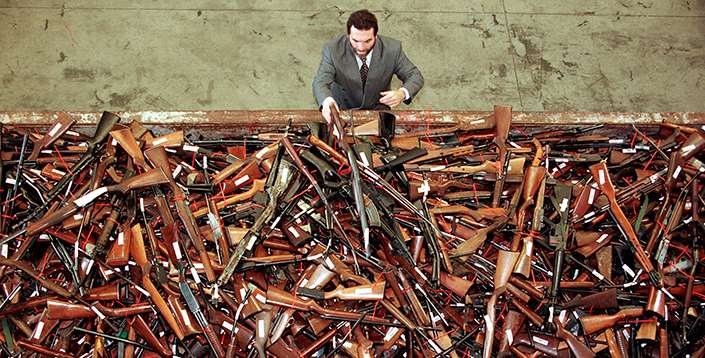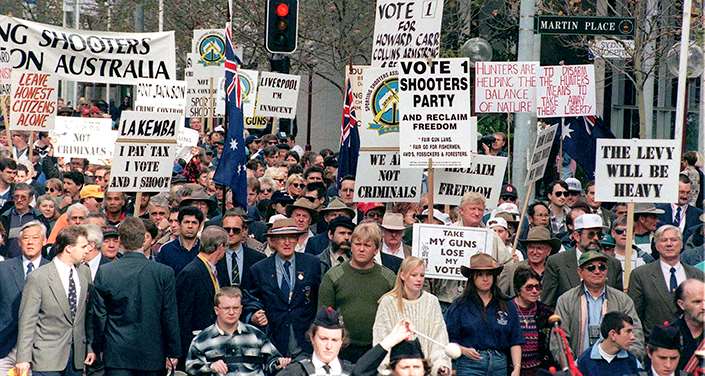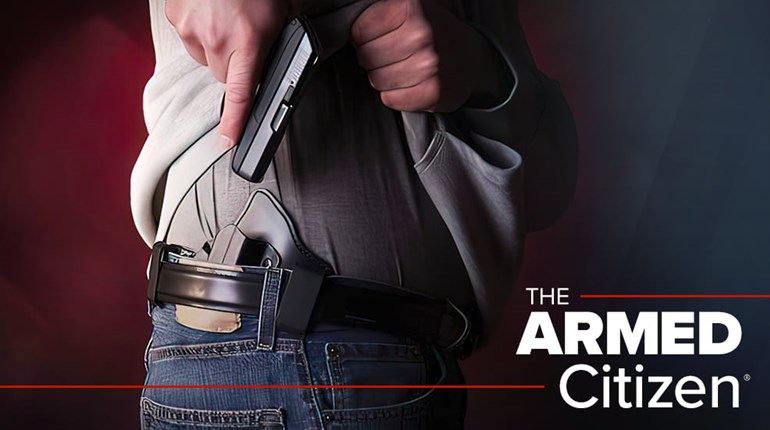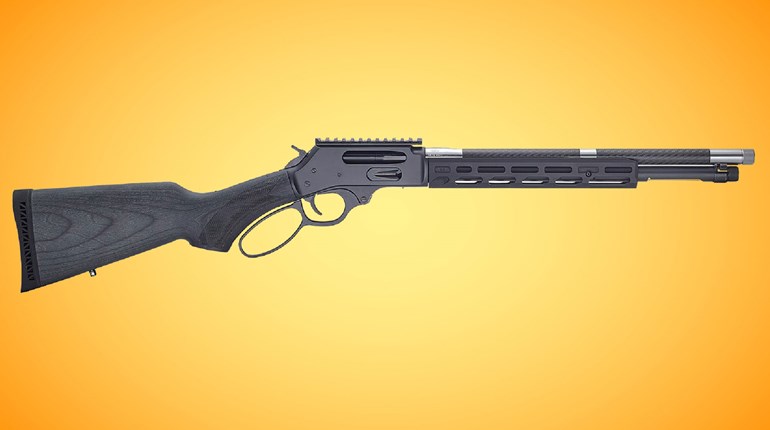
I remember the chilly autumn afternoon of April 28, 1996, vividly. I was just a carefree child careening through my parents’ living room in rural Australia when I saw my mother weeping as she watched the news.
Hours earlier, in the Tasmanian tourist town of Port Arthur, a lone and deranged murderer had embarked on a brutal rampage. When he was finally stopped, 35 people were dead and another 23 were wounded.
It was the worst mass shooting Australia had ever seen. And the island would never be the same again.
The Australian Parliament immediately began working toward comprehensive gun-control legislation under the umbrella of the National Firearms Agreement (NFA). It was comprised of a mandatory “buyback” program and a prohibition on automatic and semi-automatic rifles and pump-action shotguns. New licensing requirements were adopted, a national firearms registry was established and the government instituted a 28-day waiting period for gun purchases.
 More than 700,000 firearms were handed to the government, at the cost of over $700 million to taxpayers. All six states and eight territories were compelled to adopt these new gun laws.
More than 700,000 firearms were handed to the government, at the cost of over $700 million to taxpayers. All six states and eight territories were compelled to adopt these new gun laws.
Since the tragedy, Australia has become the poster child for gun control. It is routinely touted by gun-control advocates as the ultimate model for the U.S. to follow. So, predictably, President Joe Biden (D), following in former President Barack Obama’s (D) footsteps, is trying to sell the NFA as a facsimile for America. On his push toward the White House, Biden routinely advocated for an Aussie-like confiscation scheme.
Vice President Kamala Harris (D) has taken an even-more-vehement approach. She said on the campaign trail that she would “take executive action” if Congress failed to implement further gun-control laws within 100 days. She has also spoken proudly of her experience as California attorney general when her office “put resources into allowing law enforcement to knock on the doors of people who were on two lists,” with the lists entailing those prohibited from purchasing firearms and those deemed a danger to themselves or others.
And now that Democrats hold the majority in the U.S. House of Representatives and the tiebreaker in a divided U.S. Senate, such a jarring prospect is even more of a danger.
What the Data Shows
While it is accurate that Australia has only experienced a few mass murders in the decades since the tragedy, the truth is evident, a quarter-of-a-century on, that the results of the NFA have been greatly misconstrued.
“Several peer-reviewed studies since the Port Arthur massacre have proven that the implementation of tough gun-control measures, known as the ‘National Firearms Agreement,’ have done nothing to reduce homicide and suicide rates with a firearm,” said James Walsh, executive officer at the Shooting Industry Foundation of Australia (SIFA). “Given the data outlined in various studies, it can only be concluded that this exercise was simply a failure.”
Indeed, homicide data compiled by the Australian government’s crime statistics wing highlights that the country was already experiencing a drop in homicides in the years before the NFA was enacted; moreover, the vastly smaller continent of only 25 million residents—a dollop compared to the U.S.’s estimated 330 million—had always had significantly lower murder rates. While Australia certainly has its share of problems, historically speaking, mass shootings were never a prominent factor.
A 2015 report from the International Journal of Criminal Justice Sciences (IJCJS) also highlighted that “a succession of studies from different research groups, using a variety of different time series and analytical methods, have considered whether there is evidence that the legislative changes had significant impacts on firearm-related deaths … None of these studies has found a significant impact of the Australian legislative changes on the pre-existing downward trend in firearm homicide.”
Similarly, researchers from the University of Melbourne emphasized in 2008 that “there is little evidence to suggest that [the NFA] had any significant effects on firearm homicides.” When pointing to the confiscation component of the legislation, the report acknowledged that “the evidence so far suggests that in the Australian context, the high expenditure incurred to fund the 1996 buyback has not translated into any tangible reductions in terms of firearm deaths.”
As several analysts have pointed out, it is not true that more guns equate to more murders. One can see this in the U.S. According to data collected by the Centers for Disease Control and Prevention (CDC), in 2018 (the most-recent data available), California and Hawaii, which have some of the most-stringent gun-control laws in the country, had homicide rates of 4.8 per 100,000 and 3.1 per 100,000, respectively. Idaho and New Hampshire, by contrast, which have some of the freest firearms laws on the books, had murder rates at 2.3 per 100,000 and 1.8 per 100,000, respectively.
Even a 2018 probe—widely considered the most-thorough evaluation on the issue so far—conducted by Florida State University’s College of Criminology and Criminal Justice surmised that the Australian government’s “own data indicated that the effort failed to reduce homicides, suicides or unintentional firearms deaths,” adding that “it is even questionable whether the effort reduced mass shootings, the problem that had triggered the gun-control effort in the first place.”

“Many claims have been made about the NFA’s far-reaching effects and its potential benefits if implemented in the United States,” Stuart Gilmour, a statistician at St. Luke’s International University in Tokyo, told the Los Angeles Times in 2018. “However, more-detailed analysis of the law shows that it likely had a negligible effect on firearm suicides and homicides in Australia and may not have as large an effect in the United States as some gun-control advocates expect.”
It is also misleading for American politicians to say the tight controls “prevented” further massacres, as mass shootings were infrequent to begin with in Australia. But that little factor does not stop the Left-leaning press and political figures from championing an unquantifiable statistic.
Culture and Constitutionality
And then there are the matters of each country’s foundational cultures and constitutions. While the Australian example may seem ripe for the Biden administration to stoke its anti-gun support base, Australia and America are—literally and figuratively—worlds apart. First, Australia’s constitution does not protect the individual’s rights, as it does in the U.S. Australia, in fact, does not even have a bill of rights.
And, even though Aussies certainly love their treks through the bushland, as a young commonwealth country—federally constituted only about 120 years ago—the nature of gun ownership isn’t as much a part of the fabric of the national identity as it is in the U.S.
When Australians handed over their guns to the government in 1996, they weren’t surrendering their Second Amendment rights. The Australian constitution simply dictates that property seized by the government must be paid for. As this was an obligatory campaign, monies were paid out.
Enacting an Australian-style gun-control scheme stateside would be far different. Americans own over 400 million guns, a lot more than the estimated few million in Australia before the NFA’s implementation. Can anyone imagine federal agents going door-to-door to confiscate however many semi-automatic firearms there are in America?
In Australia, “personal protection” does not in itself suffice as a potent-enough reason to be armed. Mostly, it is property owners and those who hunt that get the rubber stamp. As one law-enforcement official based in Victoria, Australia, who was not authorized to speak on the record, told me, owners are subject to random “drop-ins” from authorities to ensure that only registered firearms are in any household and that they are correctly locked and stowed.

In terms of culture, the NFA also bizarrely took aim at the shooting sports. Despite being a rugged country with an ingrained compatibility for life in the outdoors—something of a birthright for those in the sunburnt nation—the government went after guns used by competitive shooters.
“Australia has had to adapt to a regime of shooting matches that make us less competitive on the global scale. Given the [almost] blanket ban on semi-automatic rifles and shotguns, sporting shooters are now unable to compete in any matches that involve the use of these firearms,” Walsh said. “Similarly with pistol shooting, reforms including caliber restrictions that effectively ban any pistol over .38 caliber and limit magazine sizes to 10 rounds mean that shooters who are competing in handgun matches are somewhat limited to the kind of firearms that they can now possess and compete with.”
Violent Criminals are the Problem, but not the Focus
Despite the NFA, there are, of course, still violent crimes occurring in Australia; in fact, these occur at around the same rate that they did pre-1996. Moreover, there is still a black market for guns, with an estimated 250,000 firearms in criminal hands per a 2013 report published in the Australian equivalent to the Library of Congress.
“Australia needs to look at the data and the various studies since the 1996 reforms and be prepared to have a sensible conversation on gun laws and admit the failings in policy, instead of continually trying to push the false line that Australia has the ‘gold standard’ of gun laws in the world,” Walsh said. “All the 1996 reforms did was alienate every single law-abiding gun owner in Australia and waste taxpayer money.”
From his lens, instead of continually attacking law-abiding firearms owners, various Australian governments would be better served to direct their attention at taking guns away from criminals.
“Time and time again, we continually hear of crimes committed by criminals who are out on bail for violent crimes. The recent Lindt café siege in Sydney was perpetrated by an assailant with an unknown, unregistered and already prohibited pump-action shotgun that he managed to obtain illegally; he was also out on bail at the time despite being charged with assisting in the brutal killing of his ex-wife and 43 counts of sexual assault,” Walsh said, referring to the 2014 terrorist siege.
But after this terrorist attack, Australian lawmakers decided that lever-action shotguns needed to be further restricted.
“Lawmakers cited that they were a new technology even though lever-action shotguns have been available for over 150 years,” Walsh said. “This is exactly the type of nonsense that Australia needs to review.”
Analysis of the NFA reveals it to be ineffective. Yet we will be hearing from the Biden administration (for the next four years, at least) about the “triumph” of the Australian program and its projected success here in the United States.

































